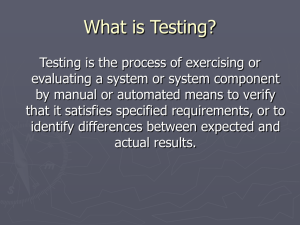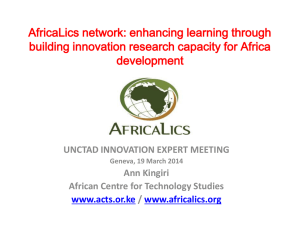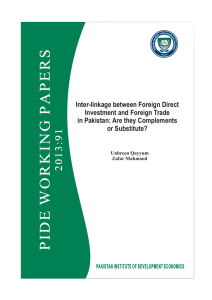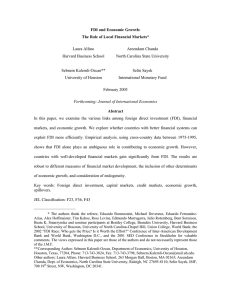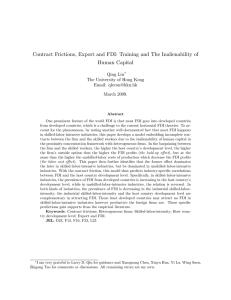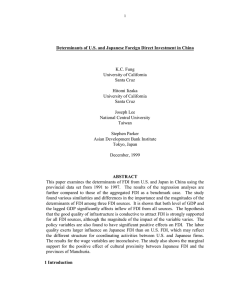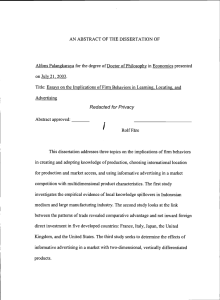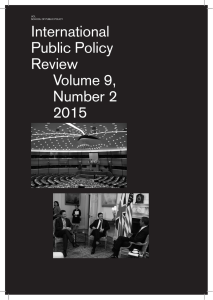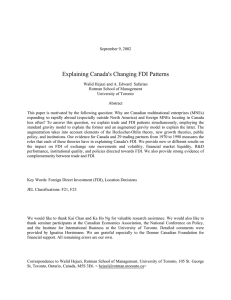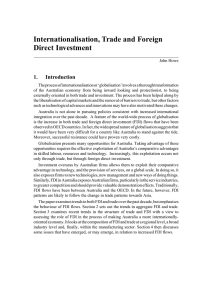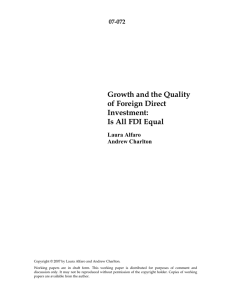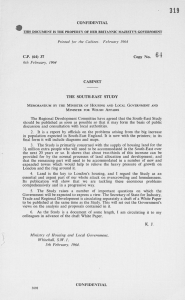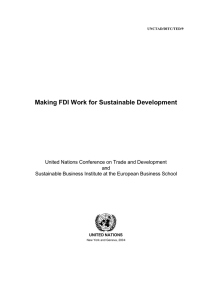Innovation, development and STI system policies Bart Verspagen
advertisement
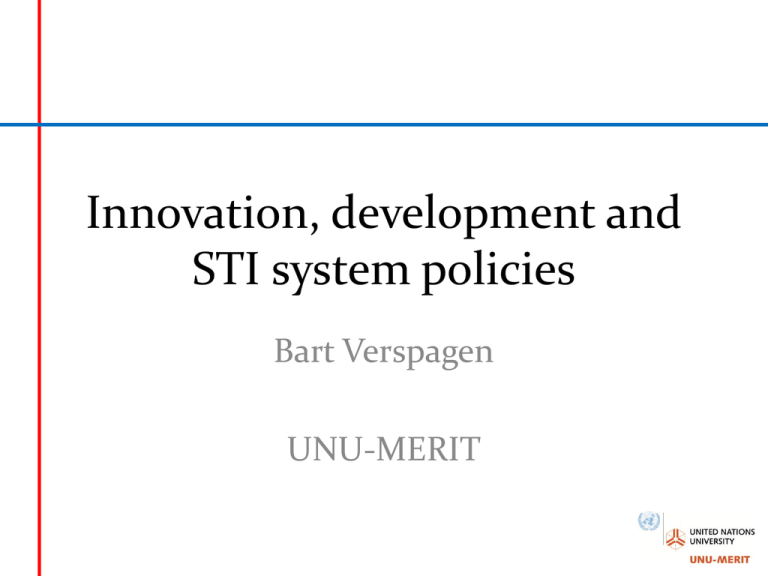
Innovation, development and STI system policies Bart Verspagen UNU-MERIT Development and innovation • The connotation of innovation with “hightech” is wrong and unfortunate, because – Development = innovation (change and transformation) – Innovation is important in “low-tech” as well – The distinction between imitation and innovation is not as strict as many would make us believe South-East Asia • South-East Asian development as an example of “factor accumulation”? – Was SE Asian growth just a matter of high investment in fixed and human capital? (when we “correct” labour productivity for these factors, very little total factor productivity is left – This macroeconomic view of SE Asia hides the tremendous transformation that was behind this growth spurt (social and economic) • Sectoral structure, trade, knowledge accumulation, and policy The traditional catching-up based growth pattern • Agricultural societies adopt (and adapt) Western technologies, and start to industrialize (develop a manufacturing sector) • There is a range of technology transfer channels, such as licensing, industrial espionage, FDI, (return) migration • Capability building is necessary to adopt this foreign knowledge • Continuous technology upgrading (e.g., OEM) until a contribution to the technological frontier is realized (e.g., Samsung) necessary capabilities change over the development process New opportunities in the era of globalization • Manufacturing-based growth has become complemented by – Service-based development – Resource-based development • Both include an element of leap-frogging (skipping stages) • Both are based on specific local capabilities and resources, but also on FDI STI policies and innovation systems • Capability-building for innovation-based development does not happen in isolation • Knowledge is transfered and implemented by a range of actors, each with their own expertise and role • A succesful development policy activates and engages all of these actors, with a strategic development vision as a guidance (developmental state) Agri-based (sustainable) development • Public and semi-public knowledge institutes who have state-of-the-art agri-bio knowledge, and can develop new knowledge as well as transfer knowledge to other actors • Institutional setup (e.g. land ownership) that accomodates rapid technology diffusion • Foreign firms and donors who contribute specific knowledge • Entrepreneurs who can innovate to add value added to the production chain by processing • A government who has a strategic vision and stimulates each actor to play its role National systems • There is no single optimal system, instead each system is the result of its own historical development • A wide range of systems can achieve development, but rarely any system can do without significant government coordination and involvement (especially the US system) • Policy is context specific (IPRs may work in one context, but will have an adverse effect in a different system) A word on policy evaluation • Quasi-experimental or truly experimental methods are all the rage for policy evaluation • They can be very insightful for the direct effects of a policy, but • Innovation policy is all about indirect effects, therefore • These methods must be complemented by a detailed effect-chain analysis



